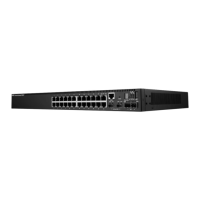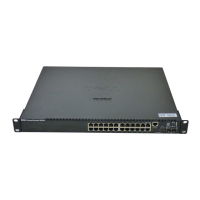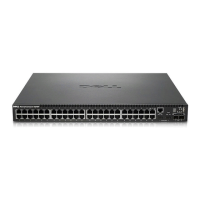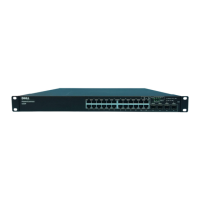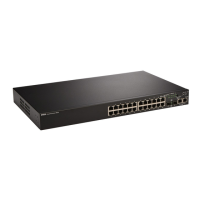274 Configuring Device Information
www.dell.com | support.dell.com
Aggregating Ports
Port Aggregation optimizes port usage by linking a group of ports together to form a single
Link
Aggregated Groups
(LAGs). Port Aggregation multiplies the bandwidth between the devices,
increases port flexibility, and provides link redundancy. The device supports up to eight LAGs per
system, and eight ports per LAG per device.
Each LAG is composed of ports of the same speed, set to full-duplex operations. Ports in a LAG,
can be of different media types (UTP/Fiber, or different fiber types), provided they operate at the
same speed.
Aggregated Links can be assigned manually or automatically by enabling
Link Aggregation Control
Protocol (LACP) on the relevant links. The device provides LAG Load Balancing based on both
source MAC addresses and destination MAC addresses.
Aggregated Links are treated by the system as a single logical port. Specifically, the Aggregated Link
has similar port attributes to a non-aggregated port, including auto-negotiation, speed, Duplex
setting, etc.
The device supports both static LAGs and
Link Aggregation Control Protocol (LACP) LAGs.
LACP LAG negotiate Aggregated Port links with other LACP ports located on a different device. If
the other device ports are also LACP ports, the devices establish a LAG between them.
The following guidelines should be followed when adding ports to a LAG:
• There is no Layer 3 interface defined on the port.
• The port does not belong to any VLAN.
• The port does not belong to any other LAG.
• The port is not a mirrored port.
• The port's 802.1p priority is equal to LAGs 802.1p priority.
• QoS Trust is not disabled on the port.
• GVRP is not enabled.
NOTE: Ports can be configured as LACP ports only if the ports are not part of a previously configured
LAG.
The device uses a hash function to determine which frames are carried on which aggregated-link
member. The hash function statistically load-balances the aggregated link members. The device
considers an Aggregated Link as a single logical port.
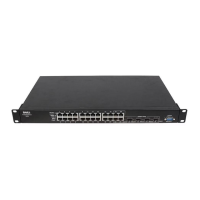
